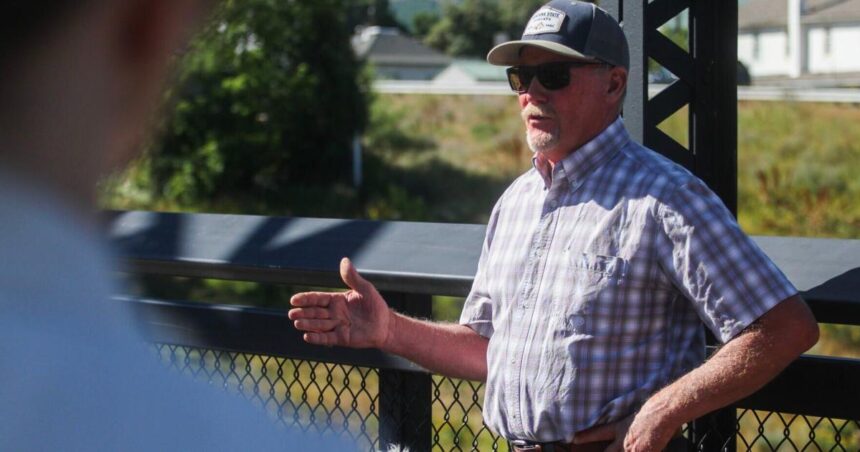Drought, much like farming, is a domino effect.
El Niño was predicted, but a drought to this extent wasn’t as clear in the cards. This summer, the Blackfoot River has experienced significant declines in water levels due to a mix of last winter’s minimal snowpack, recent dry conditions, and high temperatures.
Kelsey Jencso, University of Montana professor of watershed hydrology and Montana state climatologist, reported that the Blackfoot River Valley is experiencing “record-setting low streamflow conditions” due to the ongoing drought.
Fly fishermen float down the Blackfoot River, in August 2020. The Blackfoot River Valley is now facing D-4 or “exceptional” drought, the highest level of severity.
“I think people that are in agriculture understand drought. They understand fire danger, they understand weather conditions,” rancher Danny Iverson said. “I wonder sometimes if the general population really understands the devastation caused by drought. In America, we just never run out of food.”
People are also reading…
Ultimately, ranchers have endured hot and dry seasons for a long time. But for Iverson and his family, who have cattle ranched in the Potomac for over 50 years, this is the worst in terms of stream flow and precipitation.
Teams and researchers at UM have efforts underway to complete a weather network spanning the state. The data is meant to help monitor soil, moisture and weather conditions to improve forecasts and estimates. In turn, farmers, ranchers, and whoever plans around the weather will have access to the information and can use it for any decisions needed.
“Science is always going to improve,” Jencso added. “Our ability to predict these patterns is going to increase. There’s a massive effort underway to do that.”





